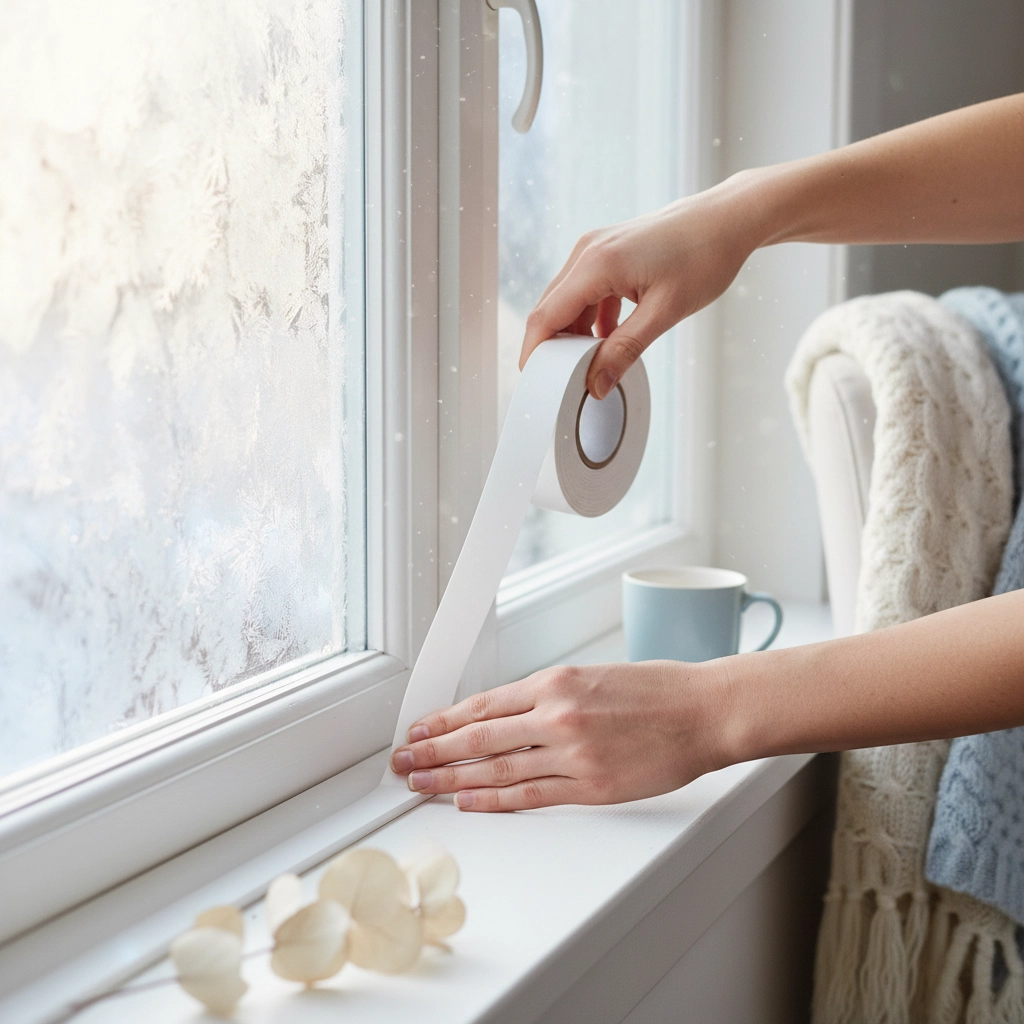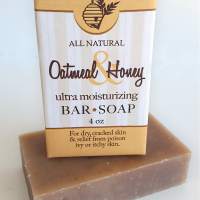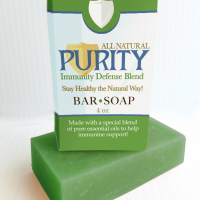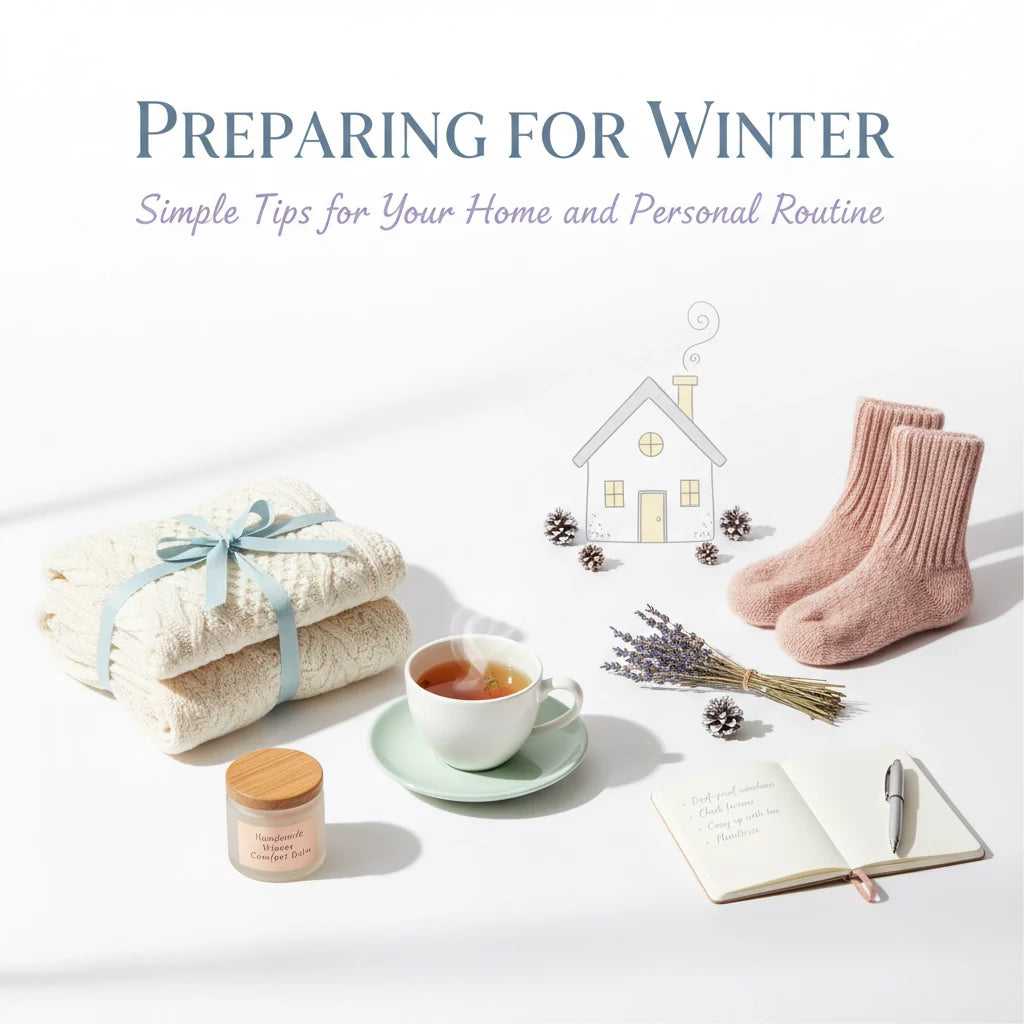Winter's arrival doesn't have to catch you off guard. With a bit of planning and some simple adjustments to both your home and daily routine, you can embrace the colder months feeling prepared and comfortable. The key is breaking everything down into manageable tasks that won't overwhelm your schedule.
Getting Your Home Winter-Ready
Protect Your Home's Exterior
Start with the outside of your home, where winter weather will hit hardest. Your roof deserves first attention: inspect for any broken or missing shingles that could let moisture in during winter storms. Clean those gutters thoroughly too. When they're clogged with leaves and debris, ice dams can form and cause expensive damage.
Take a walk around your property and look up at any tree branches hanging over your home. Heavy snow and ice can turn these into hazards, so trim back anything that looks risky. If branches hang near power lines, contact your utility company: they often provide free trimming to protect their equipment.
Don't forget about your outdoor water systems. Turn off the water valves that supply your outdoor faucets and drain your garden hoses completely. Store them in your garage or shed where they won't freeze and crack. If you have a sprinkler system, hire a professional to winterize it properly: these systems aren't buried deep enough to avoid freezing.
Seal Up the Interior
Inside your home, focus on keeping warm air in and cold air out. Walk around and check for drafts around windows and doors. Replace any worn weather stripping: it's an easy fix that makes a big difference in your heating bills.
Your heating system needs attention before you really need it. Schedule a professional inspection if you haven't had one recently. This ensures everything runs efficiently and catches small problems before they become expensive emergencies. While you're thinking about air flow, reverse your ceiling fans to push warm air down from the ceiling.

Check your smoke and carbon monoxide detectors too. Winter means more closed windows and longer furnace run times, making these safety devices even more critical. Replace batteries if needed and test each unit.
Creating Your Winter Personal Care Routine
Protecting Your Skin
Cold air and indoor heating create the perfect storm for dry, irritated skin. Your regular skincare routine probably won't cut it once temperatures drop and humidity levels plummet.
Switch to gentler cleansing products that won't strip your skin's natural oils. Natural soaps with moisturizing ingredients work better than harsh detergents during winter months. The Oatmeal & Honey soap from Amish Country tradition offers gentle cleansing while adding moisture back to your skin.

For areas that get particularly dry and cracked: like hands, elbows, and heels: keep a good salve handy. Products like Sensation Salve can provide intensive moisture and healing for problem areas. Apply these heavier treatments at night when your skin has time to absorb them fully.
Boosting Your Immune System
Winter brings more time indoors with other people, which means more exposure to cold and flu viruses. Supporting your immune system becomes even more important during these months.
Consider incorporating products with immune-supporting ingredients into your routine. The Purity line includes essential oils traditionally used to support wellness during cold season. These natural approaches work alongside good hygiene habits like frequent handwashing.

Don't forget about the basics either: getting enough sleep, staying hydrated, and eating well all support your body's natural defenses.
Hair Care Adjustments
Your hair faces unique challenges in winter. Cold air outside and heated air inside can leave it dry and brittle. Static electricity becomes a daily battle, and hats can cause breakage and flatten your style.
Switch to more moisturizing hair products and consider washing less frequently to preserve natural oils. Natural shampoo bars often work better than liquid shampoos during winter because they're less stripping. Look for formulas with nourishing oils that clean without over-drying.

Emergency Preparedness
Stock Up on Essentials
Winter storms can leave you stuck at home for days, so having supplies on hand brings peace of mind. Keep ice melt, rock salt, or sand available for treating walkways and driveways. Stock up before the first storm hits: everyone else will have the same idea once weather forecasts start looking threatening.
If you use a snow blower or other winter equipment, service it now. Check fuel levels, replace spark plugs, and make sure everything starts easily. There's nothing worse than a dead snow blower during the first big storm.
Create Warm Spaces
Identify the warmest rooms in your home and think about how to make them even cozier. Heavy curtains help insulate windows, and draft stoppers for doors can block cold air. Having one well-heated room where your family can gather conserves energy and creates a comfortable retreat.
Consider backup heating options too. Whether it's a fireplace, space heater, or extra blankets, having alternatives ready helps if your main heating system has problems.
Plan for Power Outages
Winter storms often knock out power, sometimes for extended periods. Keep flashlights, batteries, and phone chargers accessible. A battery-powered radio helps you stay informed about weather conditions and emergency information.
Stock non-perishable food that doesn't require cooking, along with plenty of water. If you rely on well water with an electric pump, fill bathtubs and containers before storms arrive.
Making It All Manageable
The key to successful winter preparation is starting early and tackling tasks gradually. Create a checklist and work through items over several weekends rather than trying to do everything at once.
Focus on the most important tasks first: those that prevent damage or ensure safety. Roof repairs and heating system maintenance top this list. Comfort improvements like draft-proofing can happen later if time runs short.

Don't forget to prepare yourself mentally for the season change too. Winter affects mood and energy levels for many people. Plan activities you enjoy, maintain social connections, and create cozy rituals that help you appreciate the season's unique pleasures.
Simple Steps, Big Difference
Winter preparation doesn't require expensive renovations or complicated systems. Most effective strategies involve simple maintenance, smart shopping, and small routine adjustments. The time you spend preparing now prevents bigger problems later and helps you enjoy winter instead of just surviving it.
Start with safety essentials like heating system checks and emergency supplies. Then move on to comfort improvements like draft-sealing and skincare adjustments. By breaking everything into manageable pieces, you'll find yourself ready for whatever winter brings: and maybe even looking forward to cozy nights by the fire with soft, healthy skin and a warm, comfortable home.
Remember, the goal isn't perfection but preparation. Even completing half these suggestions puts you ahead of most people when the first cold snap hits. Your future self will thank you for every small step you take now.



